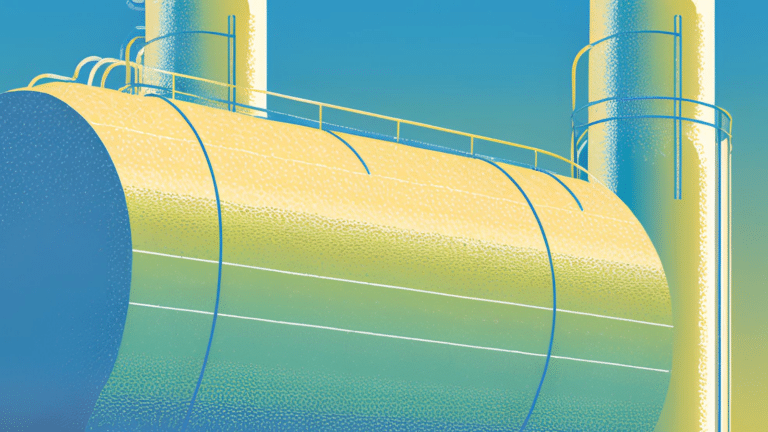Why Japan’s utility firms want to pull the plug on destination restrictions for LNG supply
A hardened feature of long-term LNG contracts, the destination clause, is coming under renewed scrutiny as the quest for flexibility gathers momentum.
Current Access Level “I” – ID Only: CUID holders and approved guests only
In May 2022, the European Commission published the REPowerEU plan. This plan aims to achieve dual objectives: (1) reducing dependence on Russian fossil fuels, and (2) fast-tracking the clean energy transition. We are publishing this dataset to assess whether the European Union achieved its short-term objectives in 2022 and whether the EU as a whole is on track to reach its ambitious 2030 targets under the REPowerEU plan. Given the interconnectedness of energy markets across Europe and globally, the level of progress towards the REPowerEU goals will have wide-ranging implications for the consumption and import of certain energy sources, including natural gas. This dataset will be updated regularly as new data becomes available. To the extent possible, we rely on publicly-available data sources.
| Short-term targets for 2022 | |||||
|---|---|---|---|---|---|
| 50 bcm increase of LNG imports in 2022* | 🟢 | Target met | |||
| 10 bcm increase of non-Russian pipeline gas imports in 2022 | 🟢 | Target met | |||
| 3.5 bcm increase of biomethane production in 2022** | 🔴 | Target missed | |||
| 13 bcm of voluntary gas savings by citizens and businesses in 2022 | 🟢 | Target met | |||
| Long-term targets through 2030 | |||||
| Zero dependence on Russian natural gas imports by 2027 | 🟢 | On track | |||
| 35 bcm of sustainable biomethane production in the EU by 2030 | 🔴 | Not on track | |||
| 20 mt of renewable hydrogen consumption in the EU by 2030 | 🔴 | Not on track | |||
| 510 GW of installed wind capacity by 2030 | 🔴 | Not on track | |||
| 592 GW of installed solar PV capacity by 2030 | 🟢 | On track | |||
| 13% lower final energy consumption in 2030 vs. reference projection*** | 🟢 | On track | |||
* Incremental LNG imports to the EU in 2022 included additional LNG imports from Russia. If the incremental Russian LNG volumes were excluded, the 50 bcm LNG target would not have been met.
** Only the initial draft of the REPowerEU plan (dated March 8, 2023) included a short-term biomethane target; the final REPowerEU plan (dated May 18, 2023) had no short-term target, only a long-term target calling for 35 bcm of sustainable biomethane production within the EU by 2030.
*** The final text of the REPowerEU plan (published on May 18, 2022) included a 13% final energy saving target by 2030 compared to a reference projection. The final, legally-binding, energy efficiency target included in the amended Energy Efficiency Directive (adopted on July 25, 2023) includes a lower 11.7% final energy saving target by 2030.
Target: 50 bcm increase of LNG imports in 2022
Status: Target met
Source: European Commission, Eurostat
Note: Actual value represents net LNG imports (i.e., total LNG imports minus total LNG exports and reloads) into the EU, as reported by Eurostat. Incremental LNG imports to the EU in 2022 included approximately 4 bcm of additional LNG imports from Russia. If the incremental Russian LNG volumes were excluded, the 50 bcm LNG target would not have been met.
Target: 10 bcm increase of non-Russian pipeline gas imports in 2022
Status: Target met
Source: European Commission, ENTSOG Transparency Platform
Note: Actual values represent net physical flows through the appropriate cross-border entry points into the EU according to ENTSOG Transparency Platform data. Physical flows were converted to billion cubic meters using the daily gross calorific values reported for each entry point on the ENTSOG Transparency Platform. Of the EU’s 26.3 bcm of incremental non-Russian pipeline gas imports in 2022, nearly three-quarters (19.7 bcm) came from the United Kingdom, while the combined net increase from Norway, Azerbaijan, Algeria, and Libya was only about 6.6 bcm.
Target: 3.5 bcm increase of biomethane production in 2022
Status: Target missed
Source: European Commission, International Energy Agency
Note: Only the initial draft of the REPowerEU plan (dated March 8, 2023) included a short-term biomethane target, aiming for the addition of 3.5 bcm of biomethane in 2022 to replace Russian gas. The final REPowerEU plan (dated May 18, 2023) had no short-term target, only a long-term target calling for 35 bcm of sustainable biomethane production within the EU by 2030.
Target: 13 bcm of voluntary gas savings by citizens and businesses in 2022
Status: Target met
Source: European Commission, International Energy Agency
Note: Actual values exclude weather effects in the buildings sector and the effects of production curtailments, intermediate product imports and fuel switching in industry.
Target: Zero dependence on Russian natural gas imports by 2027
Status: On track
Source: European Commission, GIIGNL, ENTSOG Transparency Platform
Note: Actual values represent the sum of Russian pipeline gas and LNG imports into the European Union. Pipeline gas imports are estimated based on physical flows reported on the ENTSOG Transparency Platform. Values are converted to billion cubic meters using uniform gross calorific values of 0.09 m3 per kWh. Net LNG imports from Russia into the EU are estimated based on GIIGNL’s 2022, 2023, and 2024 annual reports. Target trajectory is based on the Staff Working Document accompanying the REPowerEU plan (published on May 18, 2022), which provides a short-term target of reducing Russian gas and LNG imports by 70 bcm in 2022 and a medium-term target to eliminate Russian gas and LNG imports completely by 2027. The targeted trajectory is assumed to be linear in the 2023-2027 period (where no interim targets are provided).
Target: 35 bcm of sustainable biomethane production in the EU by 2030
Status: Not on track
Source: European Commission, European Biogas Association, International Energy Agency, Cedigaz
Note: The actual value for 2021 is estimated based on reported totals by the European Biogas Association. The actual value for 2022 is calculated based on the growth estimate for 2022 provided by the IEA. The actual value for 2023 is estimated by applying the growth rate of European biomethane production reported by Cedigaz (+19%) to the 2022 value calculated for the EU. The targeted trajectory is assumed to be linear where no interim targets are provided.
Target: 20 mt of renewable hydrogen consumption in the EU by 2030
Status: Not on track
Source: European Commission, Intelligence | Hydrogen Council
Note: The actual values for 2021, 2022, and 2023 are based on total capacity estimates by the Hydrogen Council. The 2023 estimate is based on European electrolyzer capacity as of October 2023. According to the Hydrogen Council, Europe had 170 MW of renewable hydrogen capacity in 2021, 180 MW in 2022, and 220 MW in October 2023. Conversion from capacity to actual renewable hydrogen supply assumes a 70% load factor, 67% electrolyzer efficiency, and an energy content of 33.3 kWh per kg of hydrogen. The REPowerEU target of 20 million tons of renewable hydrogen by 2030 includes 10 million tons of domestically produced and 10 million tons of imported renewable hydrogen. The targeted trajectory is assumed to be linear where no interim targets are provided.
Target: 510 GW of installed wind capacity by 2030
Status: Not on track
Source: European Commission, Eurostat, Ember
Note: The actual values for 2021 and 2022 are based on Eurostat. The actual values for 2023 are calculated using wind power capacity additions reported by Ember. The targeted trajectory is assumed to be linear where no interim targets are provided.
Target: 592 GW of installed solar PV capacity by 2030
Status: On track
Source: European Commission, Eurostat, Ember
Note: The actual values for 2021 and 2022 are based on Eurostat. The actual values for 2023 are calculated using solar PV capacity additions reported by Ember. The interim target of 320 GW by 2025 is based on the European Commission’s Staff Working Document accompanying the REPowerEU Communication (published on May 18, 2022). Solar PV target and actual values include both autoproducers and main activity producers. These values include only solar photovoltaic capacity; solar thermal capacity is explicitly excluded. The targeted trajectory is assumed to be linear where no interim targets are provided.
Target: 13% lower final energy consumption in 2030 vs. reference projection (modified to 11.7% in final legislation)
Status: On track
Source: European Commission, Official Journal of the European Union, Eurostat, Energy Institute Statistical Review of World Energy 2024
Note: The actual values for 2021 and 2022 are based on Eurostat data. The actual value for 2023 is estimated based on the Energy Institute Statistical Review of World Energy 2024. The final text of the REPowerEU plan (published on May 18, 2022) included an increased energy efficiency target requiring a 13% final energy saving by 2030 compared to a reference projection prepared in 2020. The final, legally-binding energy efficiency target included in the amended Energy Efficiency Directive (adopted on July 25, 2023) includes a more modest 11.7% final energy saving target by 2030. Target values corresponding to both the REPowerEU plan (13%) and the amended Energy Efficiency Directive (11.7%) are shown for reference. The targeted trajectory is assumed to be linear where no interim targets are provided.
Rather than drill, baby, drill, it should be build, baby, build.

This report captures diverse perspectives and offers a comprehensive look at the challenges and pathways toward a sustainable energy future.

When the Inflation Reduction Act (IRA) was passed in August 2022, it triggered unprecedented enthusiasm among potential hydrogen suppliers.[1] More than two years later, progress on final investment...
